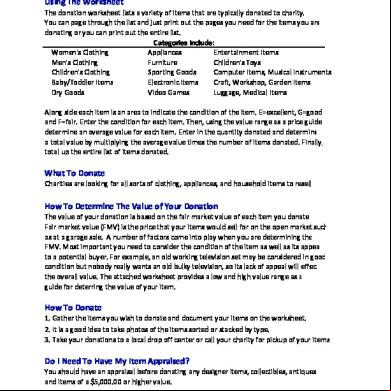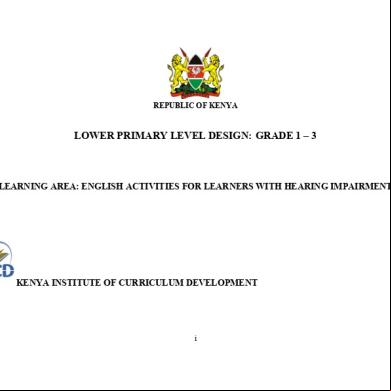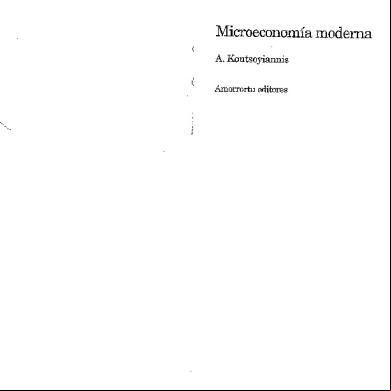Algebra 2 Sol Things To 3s5233
This document was ed by and they confirmed that they have the permission to share it. If you are author or own the copyright of this book, please report to us by using this report form. Report 3b7i
Overview 3e4r5l
& View Algebra 2 Sol Things To as PDF for free.
More details w3441
- Words: 1,352
- Pages: 5
Algebra 2
SOL Things to Test-taking strategy
Graphing Calculator Tips – negative numbers in parenthesis; fractions in parenthesis; numerator in parenthesis and denominator in parenthesis Properties Properties
In words
Algebra
Commutative*
Switch order
a + b + c = a + c + b ; a×b×c = a×c ×b
Associative*
Switch grouping
( a + b ) + c = a + ( b + c ) ; ( ab ) c = a ( bc )
Identity
Back where we started from
a + 0 = a; a ( 1) = a
Inverse
Back to the identity
1 a + ( −a ) = 0; a = 1 a
Distributive
Addition over multiplication
a ( b + c ) = ab + ac
Reflexive
a=a
Symmetric
a = b, then b = a
Transitive
a = b, b = c, then a = c
*Commutative and Associative of Multiplication doesn’t apply to Matrices. Solving Equations Absolute value
ABS - under MATH and NUM
> or ≥ - shaded “out” > a negative number = all real numbers < a negative number = no solution
< or ≤ - shaded “in”
Other equations
Put one side in Y1 and the other side in Y2 and find the intersection. Plug answers in to find the one that satisfies the equation.
Factoring a2 − b 2 = ( a + b ) ( a − b ) Difference of Perfect Squares
( = (a
)( ) ) ( a + b) ( a − b)
a4 − b4 = a2 + b 2 a 2 − b 2
Sum and/or Difference of Perfect Cubes
2
+b
2
(
a 3 ± b 3 = ( a ± b ) a 2 mab + b 2
)
a = root; ( x − a ) = factor; where it crosses the x-axis Double root – function just touches the x-axis
Only one variable? Plug in the original into Y1 and plug the answers into Y2. Graph and find the one that matches the original. Plug in values for the variables. Avoid plugging in 0 and 1.
Functions Types of Functions Function
Sample Equation
Sample Graph
Regression
Linear
y = 2x + 5
LinReg
Quadratic
y = x 2 − 3x + 4
QuadReg
Cubic
y = 3x 3 − 2x + 1
CubicReg
Quartic
y = 2x 4 − 3x 2 − x + 1
QuartReg
Absolute Value
y = 3x − 4
Step
y = x
Exponential
y = 2x
ExpReg
Logarithmic
y = log2 x
LnReg
Evaluating - f (a ) ; plug in a into the function for x Plug function into y1 and look at the table Composition - f ( g ( x ) ) or
[ f og ] ( x )
Plug in g ( x ) for x in the function f ( x )
Inverse – switch x and y and solve for y; opposite operations; reflected over the line y = x Translations f (x ± c )
Left (+) c units; Right (-) c units
f (x ) ± c
Up (+) c units; Down (-) c units
af ( x )
Multiply all y-values by a
f (ax )
Divide all x-values by a
−f ( x )
Flips over the x-axis; multiplies all y-values by -1
f (− x )
Flips over the y-axis; multiplies all x-values by -1
Domain and Range Domain = input; no zeros in the denominator; no negative numbers under the radical (even roots) Range = output; watch out for fractions; exponentials; radicals Plug into the calculator and use the TABLE feature. Look at the graph – “squash” to the x to find domain; “squash” to the y to find the range. Exponent Rules Multiplying with like bases – add the exponents
(x )(x ) = x
Dividing with like bases – subtract the exponents
xa = x a−b xb
a
b
Raising to a power – multiply the exponents
(x )
b
a b
−1
Raising to -1 – flip Fractional exponents*
xb =
a
a+ b
= x ab b a
or
xa =
( x)
=
a
b
b
a −1 1 = b ab a
*There have consistently been questions on Fractional exponents on each Algebra 2 SOL.
i i2 i3 i4
i -1 −i 1
Powers of i Conjugate – multiply by the conjugate to eliminate radicals from the denominator conjugate = 2 − 7 2+ 7 3 − 2i conjugate = 3 + 2i
the i key; Reset the calculators MODE to a + bi
Systems of Equations Matrix multiplication – can only multiply if the number of columns in the first = number or rows in the second 2 x 4 by 4 x 5 - result is 2 x 5
[ A]
−1
- find the inverse of matrix A
Ax + By = C Dx + Ey = F
Matrix Equation
A B x C D E y = F
−1
x A B C y = D E F
Plug the answers into the equations to see if they satisfy both. Solve for y and graph both. Solution is where the equations intersect. Use the PlySmlt2 APP
Systems of Inequalities Solve for y and graph in the calculator. to flip the sign when multiplying or dividing by a negative. Use Inequality APP Check the lines - < or > should be dashed; ≥ or ≤ should be solid When solved for y: shaded above - > or ≥ ; shaded below - < or ≤ Linear Programming Find the corner points and PLUG into the given equation. Don’t guess, actually plug them in!
Variation Direct
Divide
y varies directly x
y =k x
Inverse
Multiply
z varies inversely with x
zx = k
t
Divide and multiply
s varies directly with x and inversely with m
sm =k x
Sequences and Series Arithmetic = add the same thing each time Geometric = multiply by the same thing each time
∑
end
∑ rule
= find the sum; write them out and add them up!
start
Plug the formula into Y1 and go to the table to find the values to add up
Statistics Scatter plots -
STAT
EDIT
STAT Plot (setup/turn on)
ZOOM
9 (STAT)
Decide what type of function (see the types above) it is in order to choose the appropriate equation to find. STAT CALC Choose the function to match your graph. Don’t guess! Use your calculator!! How to calculate the percentage under the normal curve
1.
Pressing 2nd, VARS, and 2:normalcdf( .
Enter the lower end of your range, the upper end of your range, the mean ( µ ) and the standard deviation ( σ ).
2. 3.
Press ENTER.
Permutations – order makes the set different; your locker combination is a PERMUTATION
total objects MATH PRB 2: nPr number of objects in subset Combinations – order doesn’t matter; same set even in a different order; ex. toppings on a pizza total objects MATH PRB 3: nCr number of objects in subset Conic Sections Identify
Equation
Sample Graph
y = a ( x − h) + k 2
Parabolas
Ellipse
One squared term
Two squared ; addition; different coefficients
x = a( y − k) + h 2
( x − h)
2
+
a2
( x − h)
2
+
b2
Circle
Two squared ; addition; same coefficients
( x − h)
2
( x − h) Hyperbola
Two squared ; subtraction
( y − k) a2
2
=1
b2
( y −k)
2
=1
a2
+( y − k) = r2 2
2
−
a2
( y −k)
2
−
( y − k)
2
=1
b2
( x − h) b2
2
=1
SOL Things to Test-taking strategy
Graphing Calculator Tips – negative numbers in parenthesis; fractions in parenthesis; numerator in parenthesis and denominator in parenthesis Properties Properties
In words
Algebra
Commutative*
Switch order
a + b + c = a + c + b ; a×b×c = a×c ×b
Associative*
Switch grouping
( a + b ) + c = a + ( b + c ) ; ( ab ) c = a ( bc )
Identity
Back where we started from
a + 0 = a; a ( 1) = a
Inverse
Back to the identity
1 a + ( −a ) = 0; a = 1 a
Distributive
Addition over multiplication
a ( b + c ) = ab + ac
Reflexive
a=a
Symmetric
a = b, then b = a
Transitive
a = b, b = c, then a = c
*Commutative and Associative of Multiplication doesn’t apply to Matrices. Solving Equations Absolute value
ABS - under MATH and NUM
> or ≥ - shaded “out” > a negative number = all real numbers < a negative number = no solution
< or ≤ - shaded “in”
Other equations
Put one side in Y1 and the other side in Y2 and find the intersection. Plug answers in to find the one that satisfies the equation.
Factoring a2 − b 2 = ( a + b ) ( a − b ) Difference of Perfect Squares
( = (a
)( ) ) ( a + b) ( a − b)
a4 − b4 = a2 + b 2 a 2 − b 2
Sum and/or Difference of Perfect Cubes
2
+b
2
(
a 3 ± b 3 = ( a ± b ) a 2 mab + b 2
)
a = root; ( x − a ) = factor; where it crosses the x-axis Double root – function just touches the x-axis
Only one variable? Plug in the original into Y1 and plug the answers into Y2. Graph and find the one that matches the original. Plug in values for the variables. Avoid plugging in 0 and 1.
Functions Types of Functions Function
Sample Equation
Sample Graph
Regression
Linear
y = 2x + 5
LinReg
Quadratic
y = x 2 − 3x + 4
QuadReg
Cubic
y = 3x 3 − 2x + 1
CubicReg
Quartic
y = 2x 4 − 3x 2 − x + 1
QuartReg
Absolute Value
y = 3x − 4
Step
y = x
Exponential
y = 2x
ExpReg
Logarithmic
y = log2 x
LnReg
Evaluating - f (a ) ; plug in a into the function for x Plug function into y1 and look at the table Composition - f ( g ( x ) ) or
[ f og ] ( x )
Plug in g ( x ) for x in the function f ( x )
Inverse – switch x and y and solve for y; opposite operations; reflected over the line y = x Translations f (x ± c )
Left (+) c units; Right (-) c units
f (x ) ± c
Up (+) c units; Down (-) c units
af ( x )
Multiply all y-values by a
f (ax )
Divide all x-values by a
−f ( x )
Flips over the x-axis; multiplies all y-values by -1
f (− x )
Flips over the y-axis; multiplies all x-values by -1
Domain and Range Domain = input; no zeros in the denominator; no negative numbers under the radical (even roots) Range = output; watch out for fractions; exponentials; radicals Plug into the calculator and use the TABLE feature. Look at the graph – “squash” to the x to find domain; “squash” to the y to find the range. Exponent Rules Multiplying with like bases – add the exponents
(x )(x ) = x
Dividing with like bases – subtract the exponents
xa = x a−b xb
a
b
Raising to a power – multiply the exponents
(x )
b
a b
−1
Raising to -1 – flip Fractional exponents*
xb =
a
a+ b
= x ab b a
or
xa =
( x)
=
a
b
b
a −1 1 = b ab a
*There have consistently been questions on Fractional exponents on each Algebra 2 SOL.
i i2 i3 i4
i -1 −i 1
Powers of i Conjugate – multiply by the conjugate to eliminate radicals from the denominator conjugate = 2 − 7 2+ 7 3 − 2i conjugate = 3 + 2i
the i key; Reset the calculators MODE to a + bi
Systems of Equations Matrix multiplication – can only multiply if the number of columns in the first = number or rows in the second 2 x 4 by 4 x 5 - result is 2 x 5
[ A]
−1
- find the inverse of matrix A
Ax + By = C Dx + Ey = F
Matrix Equation
A B x C D E y = F
−1
x A B C y = D E F
Plug the answers into the equations to see if they satisfy both. Solve for y and graph both. Solution is where the equations intersect. Use the PlySmlt2 APP
Systems of Inequalities Solve for y and graph in the calculator. to flip the sign when multiplying or dividing by a negative. Use Inequality APP Check the lines - < or > should be dashed; ≥ or ≤ should be solid When solved for y: shaded above - > or ≥ ; shaded below - < or ≤ Linear Programming Find the corner points and PLUG into the given equation. Don’t guess, actually plug them in!
Variation Direct
Divide
y varies directly x
y =k x
Inverse
Multiply
z varies inversely with x
zx = k
t
Divide and multiply
s varies directly with x and inversely with m
sm =k x
Sequences and Series Arithmetic = add the same thing each time Geometric = multiply by the same thing each time
∑
end
∑ rule
= find the sum; write them out and add them up!
start
Plug the formula into Y1 and go to the table to find the values to add up
Statistics Scatter plots -
STAT
EDIT
STAT Plot (setup/turn on)
ZOOM
9 (STAT)
Decide what type of function (see the types above) it is in order to choose the appropriate equation to find. STAT CALC Choose the function to match your graph. Don’t guess! Use your calculator!! How to calculate the percentage under the normal curve
1.
Pressing 2nd, VARS, and 2:normalcdf( .
Enter the lower end of your range, the upper end of your range, the mean ( µ ) and the standard deviation ( σ ).
2. 3.
Press ENTER.
Permutations – order makes the set different; your locker combination is a PERMUTATION
total objects MATH PRB 2: nPr number of objects in subset Combinations – order doesn’t matter; same set even in a different order; ex. toppings on a pizza total objects MATH PRB 3: nCr number of objects in subset Conic Sections Identify
Equation
Sample Graph
y = a ( x − h) + k 2
Parabolas
Ellipse
One squared term
Two squared ; addition; different coefficients
x = a( y − k) + h 2
( x − h)
2
+
a2
( x − h)
2
+
b2
Circle
Two squared ; addition; same coefficients
( x − h)
2
( x − h) Hyperbola
Two squared ; subtraction
( y − k) a2
2
=1
b2
( y −k)
2
=1
a2
+( y − k) = r2 2
2
−
a2
( y −k)
2
−
( y − k)
2
=1
b2
( x − h) b2
2
=1










